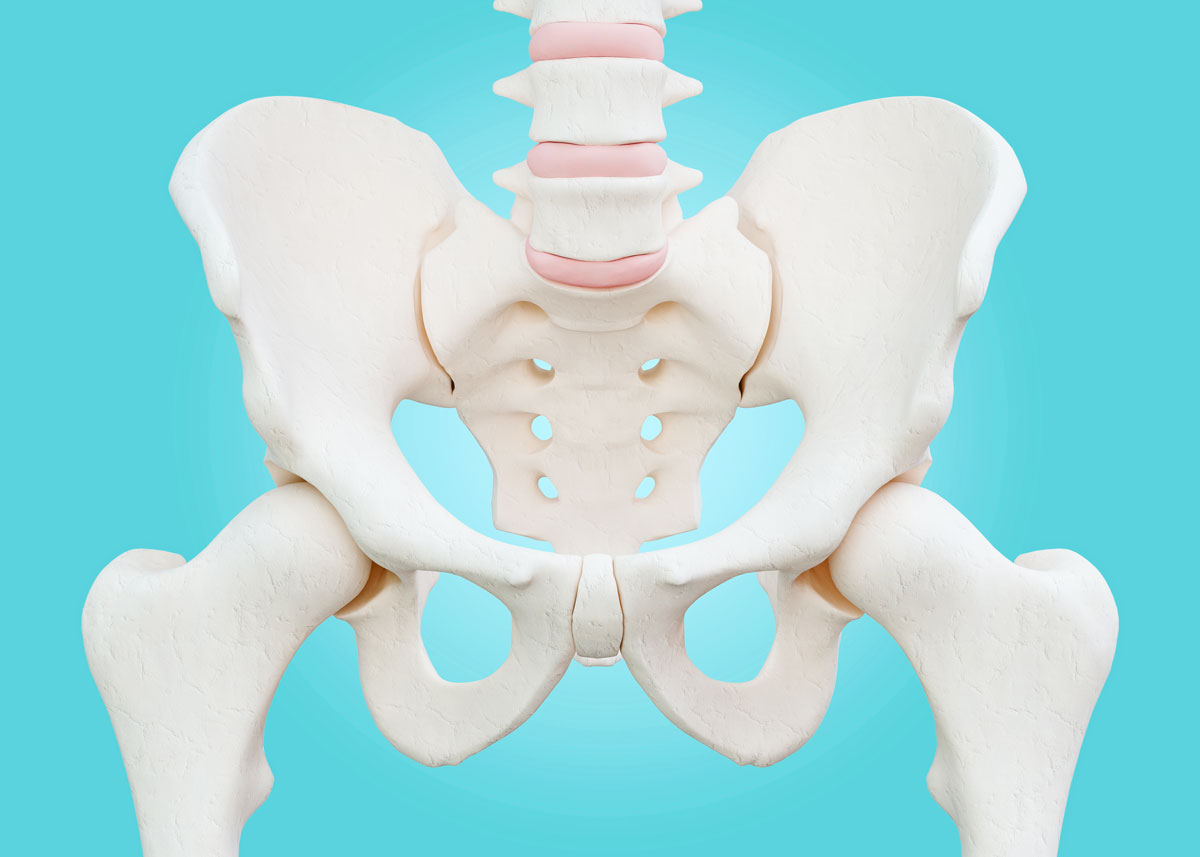 The sacroiliac joint (SIJ) connects the sacrum to the pelvic girdle. It is a strong, ligamentous joint supported by musculature, and primarily functions to absorb shock between the upper body and the pelvis/legs and allows for very little motion.
The sacroiliac joint (SIJ) connects the sacrum to the pelvic girdle. It is a strong, ligamentous joint supported by musculature, and primarily functions to absorb shock between the upper body and the pelvis/legs and allows for very little motion.
Issues may arise when the SIJ is too lax and allows too much movement, is fixed and moves little, or is inflamed (sacroiliitis) due to degeneration (compounded by joint laxity), infection or autoimmune conditions.

Sacroiliac joint pain can be a great masquerader, often mimicking symptoms felt with other causes of back pain:
- Dull, aching lumbar axial pain, typically radiating to the buttock, is similar to that of facetogenic axial pain. It can accompany lumbosacral stiffness and reduced range of motion, particularly flexion.
- Sharp pain radiating to the buttocks/posterior thigh, and rarely extend beyond the knee down into ankle, is similar to radicular pain. This commonly occurs on weightbearing on affected side and worsens with climbing stairs or stepping on an uneven ground.
While SIJ pain can be seen in patients of all ages and gender, there are risk factors.
- Pregnancy and childbirth with progesterone-induced ligament laxity and hypermobility and associated weight gain. which may persist well after childbirth and cause ongoing pain
- Gait instability (e.g. leg length discrepancy or scoliosis) causing uneven pressure on one side of the pelvis, accelerating degeneration
- Previous spinal surgery, especially in the cases of lumbar fusion. In general, due to inherent immobility in fused sections of vertebrae, degeneration will be accelerated in neighboring facet joints or SIJ
- Repetitive stress, including heavy lifting and laborious work.
Diagnosis of SIJ pain can be challenging. Patients tend to report their pain as being ‘below the beltline’ and unilateral rather than central. A common description is a localised ache on one side of the sacrum that radiates to the ipsilateral buttock and posterior thigh. Examination may reveal a focal tenderness and reproducible pain on the PSIS, which directly overlies the SIJ. A positive response to a SIJ injection of local anaesthetic greatly increases diagnostic accuracy.
Treatment for SIJ pain is multidisciplinary, involving extensive physiotherapy input to strengthen the supporting musculature, stretching and relieving associated muscle tension, and potential use of a pelvic brace. Judicious use of non-opioid analgesia will aid in rehabilitation.
A pain specialist can aid with procedural relief, including both SIJ injections and radiofrequency ablation (rhizotomy) of lateral branches of sacral nerves that innervate the joint. Patients with severe laxity may find prolotherapy helpful in strengthening the ligamentous structure. A subset of patients may require a surgical fixation in treatment-resistant cases.
Key messages:
- SIJ pain may account for up to 30% of low back pain
- Diagnosis can be challenging
- Treatment is multidisciplinary
References available on request.
Questions? Contact the editor.
Author competing interests: None to disclose.
Disclaimer: Please note, this website is not a substitute for independent professional advice. Nothing contained in this website is intended to be used as medical advice and it is not intended to be used to diagnose, treat, cure or prevent any disease, nor should it be used for therapeutic purposes or as a substitute for your own health professional’s advice. Opinions expressed at this website do not necessarily reflect those of Medical Forum magazine. Medical Forum makes no warranties about any of the content of this website, nor any representations or undertakings about any content of any other website referred to, or accessible, through this website.

